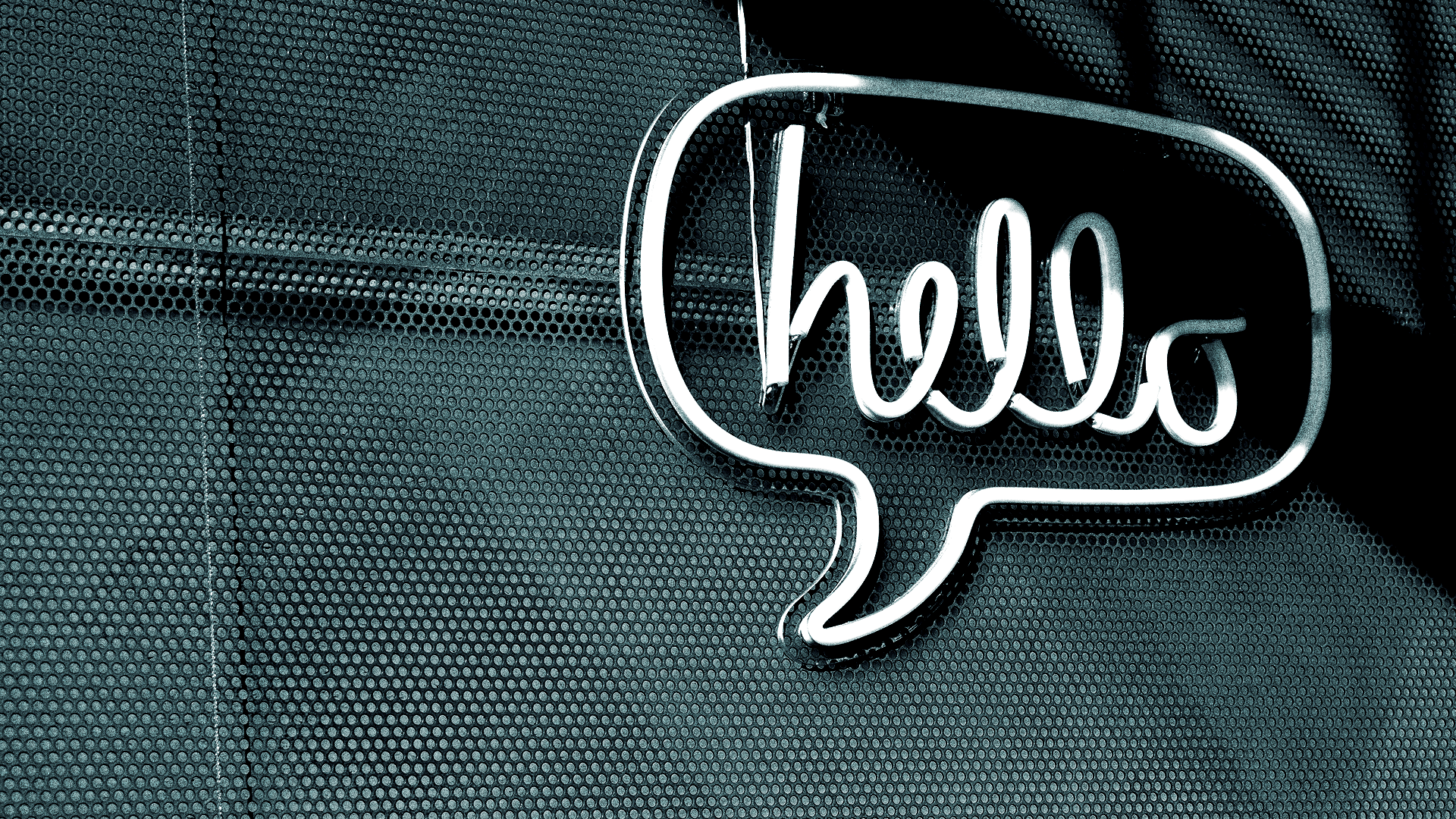The first banner ad, published on Wired.com in 1994, was unbelievably effective. The simple JPG—part of an AT&T campaign—garnered a whopping 44% click-through rate.

Not exactly a looker compared to the ad creative out there today. And yet these days, nearly a quarter century later, a click-through rate of just .05% is considered decent.
As marketers, we are vying for an increasingly scarce resource: attention. It’s a vicious spiral of supply and demand in which the supply is dwindling every year. We’re up against other brands, the 24/7 news cycle, celebrity Instagrams and Twitter beefs, and a whole mess of other distractions that demand the eyeballs of the masses.
It should really come as no surprise, then, that what can now be considered “traditional” digital advertising just doesn’t cut it anymore.
Today’s users almost always have a particular goal in mind when they browse the Web, and they have gotten good at dodging the ads that get in their way. Banner blindness is real, on screens big and small. So, brands need to engage consumers on another level.
That’s where branded experiences come into play.
This is not a new concept, of course. Experiential marketing has been a thing, even before it had a name. But that doesn’t change the fact that many brands simply don’t do it.
As attention becomes more and more scarce, it may be time for those who have brushed it off as “not for them” to strongly reconsider.
* * *
Why Do Branded Experiences Work?
Simply put, people like to do things. And it makes a bigger, more lasting impression.
Statistics show that younger generations—that is, both Millennials and Gen Zers—actually value experiences over most material goods. It’s true of their buying habits, and it’s true of how they come to know and trust the companies selling to them. As two groups of consumers that have grown up swarmed by advertising messages, the lens through which they scrutinize brands is discriminating indeed.
But the effectiveness of engaging experiences transcends age. According to EventMarketer, 85% of consumers overall are more likely to make a purchase after participating in a brand's event or experience.

It’s of course harder to reach as many people with a physical experience than it is with an online campaign, but if that online campaign is only converting five people out of every thousand it reaches, what is that reach worth?
The best experiential campaigns can still reach numbers outside of their physical proximity anyway. There is often media coverage involved, and people love to share these sorts of experiences on their social media, especially if there’s some kind of visual element to it.
That does a lot more for brand awareness than being one of the literally thousands of ads someone sees in a given day.
But it’s not just about quantity, of course. The brand experiences that really resonate with people are the memorable ones. The ones that make people think and feel, or even just laugh. The ones that let people see what your brand is really about.
You’re advertising to humans, right? Think about them when designing experiences.
Ads tend to only tantalize with the possibility that something might improve someone’s life; an impactful, memorable branded experience offers that positivity in and of itself. If someone gets something out of it, that person will be much more likely to buy from you over the long term.
The thing is, most people know when they’re being advertised to, and they can sniff out inauthenticity pretty quickly. The best brand experiences are the ones that feel not just like they’re made for people, but by people, too.
The whole point of experiential marketing, after all, is getting away from the alienating experience of staring at a screen.
* * *
Some Examples to Put Things in Perspective
So, what does an authentic brand experience look like?
That’s the fun part: there’s no one right way to do it. It can be a whole event, like a conference or a pop-up shop, or it can be something much simpler. We’ve compiled some of our favorites below.
The OG branded experience: The Pepsi Challenge
As we mentioned before, experiential marketing in general is not a new concept. Though social media has greatly enhanced its effect, the practice predates Facebook, Instagram, Twitter, and even MySpace or Friendster.
Back in the 80's, Pepsi dared people to sit down and take the “Pepsi Challenge,” a blind taste test that gives tasters sips of Pepsi and Coca Cola to see if they could taste the difference.
Granted, the world was very different back in 1975 and soda is terrible for you (sorry, Pepsi!), but the point is this: Having people sit down and actually interact with a product in person—and then spinning commercials out of it—had a bigger impact on how well it was remembered than a basic billboard ever could.
The cleverness of this campaign is not just that it encouraged people to be more open-minded about Pepsi (albeit only when taking a sip—other studies have shown people find Pepsi’s sweetness too cloying in larger quantities).
The almost guerilla-esque marketing tactics and iconoclastic framing also positioned Pepsi’s brand as a rebellious alternative to the establishment cola, to the point that people are still debating their preferences 40 years hence.
Volkswagen let people live out their Big reenactment dreams
People tended to take the escalator at a subway station in Stockholm, Sweden. If you’re the type of person who tracks your steps every day and understands that even the slightest increase in activity can have great health benefits, you know that escalators are convenient but not helpful.
Overnight, Volkswagen converted the underused stairs into a working piano. The next morning, commuters were surprised to find each step created a different musical tone.
As a result, 66% more people took the stairs than usual. The beauty of this campaign was in its subtlety: it blended seamlessly into people’s normal activities. But it also made their day a little more fun, and they associated Volkswagen—which has always tried to be a little more fun than other car companies—with that pleasure.
It also showed that you can use fun to get people to make healthier decisions, like taking the stairs instead of the escalator or purchasing environmentally friendly products.
Going pro (at least virtually) with Gatorade
Gatorade has built itself up as a drink for high-performance athletes, the missing piece for you to achieve a 45-inch vertical leap or lift a Hyundai over your head. So, it was a natural fit when, at SXSW in 2017, Gatorade created a simulated combine for thirsty participants to run through, similar to the tests that football teams run prospective players through to assess their abilities.
People could test abilities like reflexes, flexibility, and speed, and then they could incorporate that data into their diets and workout regimens.
The experience as a whole made participants feel closer to the elite athletes they see on TV, which is what Gatorade is all about.
Humans behind everything, especially your clothes
People buy clothes for lots of reasons. They want to look good, sure, but for a lot of folks, they’d also like to be able to trust that the garments were sourced and sewn ethically.
To cement its brand as a responsible choice for clothing, Fashion Revolution set up a vending machine that let people purchase t-shirts for just 2€. When they dropped in their coins, the machine showed them a short video of the exploitative sweatshop conditions required to make a shirt available so cheaply.
After the video concluded, customers were given the choice whether to purchase the shirt or donate the money they had entered.
This type of experience isn’t necessarily warm and fuzzy; it’s quite gut-punching, and appeals to the empathetic human in us all. It didn’t sell a whole lot of shirts, of course, but it still did its job by raising awareness for an important issue and establishing Fashion Revolution as a clothing brand trying to make a difference.
Macallan opts for showing, not telling
We’d be remiss if we didn’t give a shout-out to a brand utilizing augmented reality to enhance their branded experiences.
Last year, Macallan Whisky totally nailed it with their Gallery 12, a touring exhibit that utilizes both AR and a proprietary iPhone app to teach people about the two different expressions of their 12 Year Old Scotch.
It would have been easy enough to just tell people the difference between a scotch aged in European oak sherry casks and one aged in both American and European oak casks, but where’s the fun in that?
By creating not only a breathtaking space (a great experience in and of itself), but looping in cutting-edge technology, Macallan perfectly married fun with an unforgettable history lesson that gave scotch lovers something to talk about.
* * *
Putting It All Together
There’s no one right way to create branded experiences—different things work for different brands depending on the audience. The possibilities will shift and evolve as technology does.
All the same, the experience itself should always be downstream from the brand you’re creating. And as with every other type of marketing you engage in, the most important aspect to experiential marketing is the authenticity of the experience.
If you put the experience first and work backward, you’ll often have to stretch to make things fit (if they fit at all). But if you start with your brand as the foundation and build organically from there—always accounting for the human beings on the other side—the authenticity practically takes care of itself, and you’ll be able to create something that will be hard to forget.
.png?width=250&height=153&name=CSI-OverskiesRebrand_LOGO-01(smaller).png)

.png?width=100&height=61&name=CSI-OverskiesRebrand_LOGO-01(smaller).png)


.png?width=88&name=CSI-OverskiesRebrand_LOGO-01(smaller).png)



